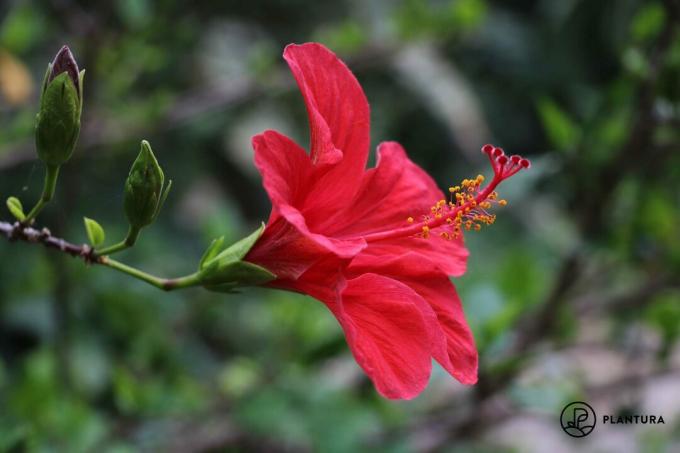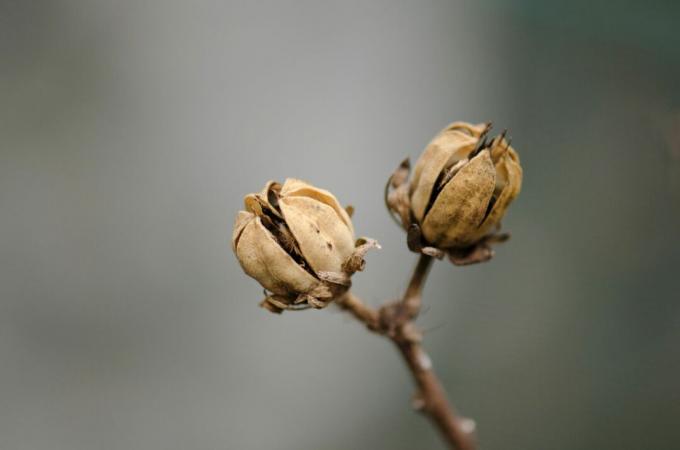In order to plant hibiscus and to enjoy the hibiscus blossoms, specialist knowledge about the ornamental wood is required. We have helpful tips ready for you.

It is a real eye-catcher in every garden, but it can also shine in the house. The hibiscus from Asia (Hibiscus) belongs to the mallow family (Malvaceae) and adorns the window sills and beds of many hobby gardeners with its colorful and sweeping flowers. The often two-tone flowers shine in the richest colors - from delicate white to strong purple. There are many different types of hibiscus, all of which have different requirements in terms of cultivation and care. We'll tell you what to look for when growing hibiscus.
contents
- Planting hibiscus: location
- Planting hibiscus: planting time
- Planting hibiscus: the process
-
Propagating hibiscus yourself: using seeds or cuttings?
- Sow hibiscus seeds
- Propagate the hibiscus by cuttings
The hibiscus places high demands on its location. This involves both the quality of the substrate and the amount of sunlight. We explain step by step how the hibiscus likes it best.
Planting hibiscus: location
A nutrient-rich soil with a balanced sand-loam ratio is ideal for planting hibiscus. Enriching the Topsoil with compost is advisable, as this promotes flower formation in summer. The pH should be in the neutral to very slightly acidic range. It is important that the garden hibiscus in particular is in full sun. The rose hibiscus, or rose marshmallow (Hibiscus rosa-sinensis), is mainly kept as a houseplant. This type of hibiscus also likes it very sunny. For the hibernation, however, you should put it a little more shady.

Planting hibiscus: planting time
As soon as you can hope for warmer temperatures in spring, the hibiscus should be planted. In the first one to two years it is not yet particularly hardy, which is why an establishment phase as long as possible until winter has a positive effect.
Planting hibiscus: the process
If you want to plant a garden hibiscus, you should have had a good breakfast. The excavation for the garden marshmallow, which is up to three meters high, should be at least twice as large as the root ball. It is also advisable if the excavated soil is loosened up well and enriched with a little compost. If you prefer to grow the smaller variant, i.e. the rose hibiscus, in a pot as a houseplant, you don't have to use so much force and can simply choose a pot that is big enough.
Propagating hibiscus yourself: using seeds or cuttings?
There are several ways to propagate your own hibiscus. Whether you're doing it on seeds or on Cuttings should resort to depends on your experience and, most importantly, on your patience. Below we give helpful tips on how to multiply hibiscus.
Sow hibiscus seeds
At the end of summer, the seeds of the hibiscus are ripe and fall out. If you want to sow your own hibiscus seeds next year, simply collect the small, bristle seeds. The seeds should be slightly scratched before sowing and then lightly covered with compost for cultivation in a pot. The potting soil can also be moistened with a spray bottle so that the light seeds do not float away when the water is poured on. You should start sowing early in the year so that the plants develop sufficiently. Be sure to put the hibiscus in a warm, sunny place when it is germinating. Of course, you can also buy hibiscus seeds. Bags of around 100 are available from € 2.50 in well-stocked specialist shops or from mail order companies.

Propagate the hibiscus by cuttings
Another way to propagate your beloved hibiscus is by growing cuttings. For propagation by cuttings, about 15 cm long shoot pieces with at least three buds or eyes are cut from the desired plant. These must then be moistened with rooting powder and then placed in small pots with special potting soil. It is important that the soil and especially the air are kept moist until the first strong roots have formed. A special potting soil such as our peat-free one is well suited Plantura organic herb & seed compost.
Attention: If the humidity is too low, perspiration can lead to dehydration! After a few weeks in a warm and sunny place, the cuttings are ready to be planted out.
Another possibility is the propagation via subsidence or cuttings. Here, individual shoots are bent towards the ground and brought into contact with the ground at one point (sinker) or completely sunk into the ground with the tip of the shoot. Roots form where the shoot touches the earth. Independent plants are created both when they are put down and when they are lowered, which you can then place where they cut the best figure.
If you are looking for the right one Care of the hibiscus you can read about it here in our special article.

